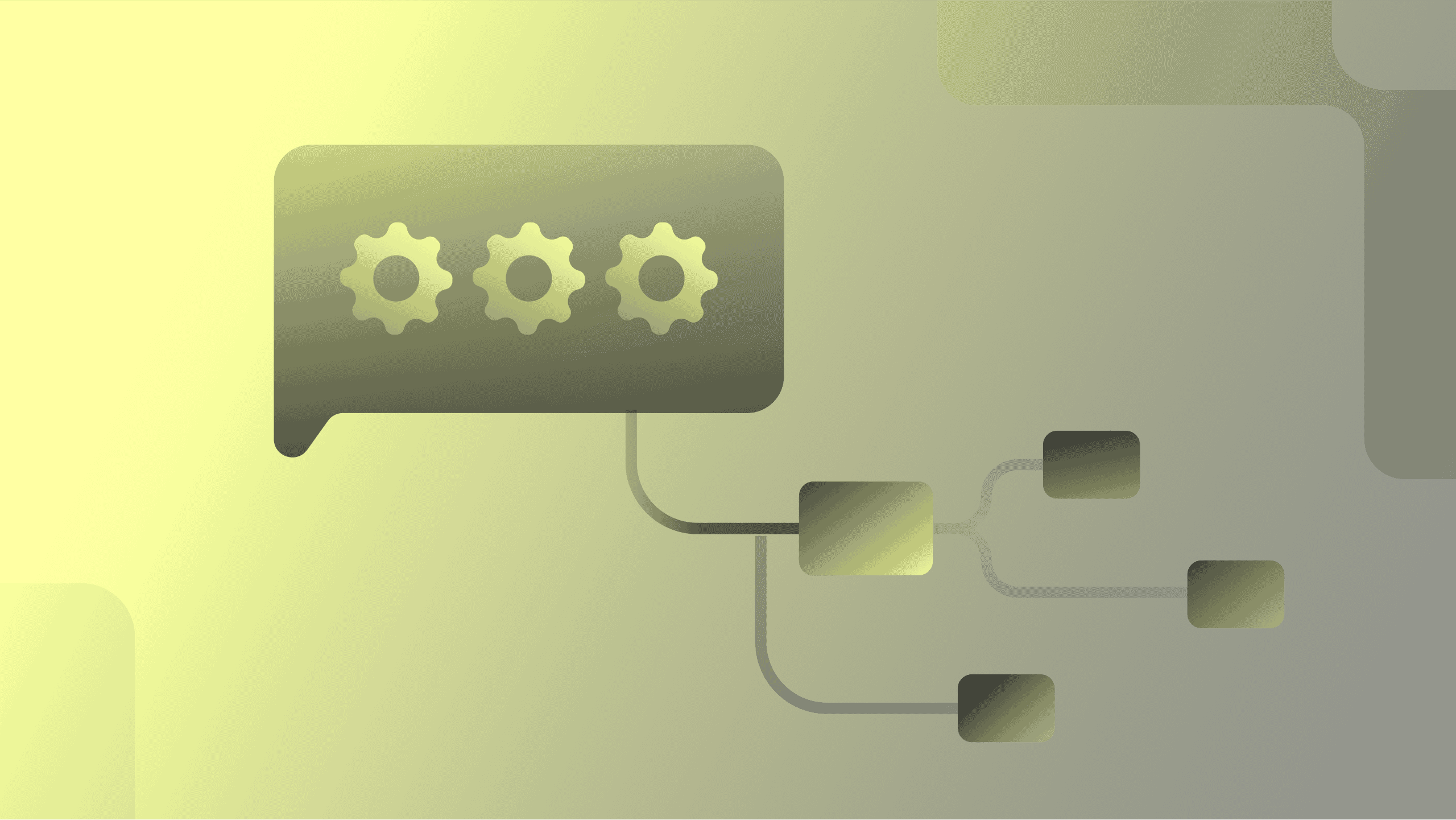
Key Takeaways
True customer service automation extends far beyond simple chatbots and ticketing systems.
- What it is: Effective automation creates an “autonomous operational backbone” that understands requests in natural language and orchestrates the entire resolution process across enterprise systems like ERP and CRM.
- The business impact: This approach automates the end-to-end workflow, dramatically improving resolution times and customer satisfaction.
- The key benefit: It frees human agents from manual, repetitive tasks to focus on high-value problem-solving.
The Great Stagnation of Customer Service
For the better part of a decade, the narrative around Customer Service Automation has been dominated by two technologies: the chatbot and the ticketing system. The vision was compelling—a world where simple queries are deflected by bots, and complex issues are neatly organized for human agents, leading to massive efficiency gains and happier customers. Spurred by this vision, enterprises have invested billions in a vast ecosystem of SaaS platforms and AI-powered tools.
And yet, for most organizations, the promised revolution never arrived. While front-end interactions have become more structured, the underlying work of actually solving a customer’s problem remains a stubbornly manual, inefficient, and chaotic process. Our agents are more organized, but they are no less overwhelmed. The “automation” we purchased has turned out to be a sophisticated system for managing conversations, not a system for resolving issues.
This is the great failure of modern customer service automation: it has optimized the front door while ignoring the messy, labyrinthine factory behind it. To truly transform the customer experience and unlock real operational efficiency, CIOs and Heads of Customer Experience must look beyond the chatbot and confront the true source of friction: the complex, manual, cross-system work that happens after the initial ticket is created.
The Anatomy of a Manual Resolution
The fundamental flaw in most customer service automation software is that it is blind to the actual work your agents do. A ticketing system can categorize a problem, but it cannot solve it. The real work—the investigation, the data gathering, the cross-departmental coordination—happens outside the system, in a manual “swivel-chair” process that is the true enemy of productivity.
To understand how to automate customer service process work effectively, consider the “simple” request of “Where’s my refund?”:
- The Ticket: The customer’s request is logged in the service desk. This is where most customer service automation ends.
- The First Swivel: The agent opens another system, the ERP or order management system, to find the original order and the associated return merchandise authorization (RMA).
- The Second Swivel: They then pivot to a third system, the warehouse management system or a logistics provider’s portal, to confirm that the returned item was actually received.
- The Third Swivel: Next, they access the finance or payment processing system to see if the refund has been processed. They discover it hasn’t.
- The Communication Breakdown: The agent now has to communicate with the finance department, likely by sending an email or a Slack message, to ask why the refund wasn’t issued. They wait for a response.
- The Final Response: Hours or even days later, they finally have an answer and can respond to the customer.
This is not an automated process. It is a series of fragmented, manual tasks held together by an expensive human agent acting as a human API. This is the reality that traditional customer service automation ignores, and it is a colossal drain on resources and a primary driver of poor customer satisfaction (CSAT). The challenge of automating customer service is solving this entire workflow.
A New Paradigm: Automating the Entire Resolution, Not Just the Conversation
To break this cycle of manual inefficiency, leaders need a new approach. Agentic AI represents a fundamental paradigm shift for Customer Service Automation. It moves beyond managing tickets to providing an intelligent engine that can execute the entire end-to-end resolution process, based on instructions provided in plain English.
This is the key to unlocking true customer service automation. An AI agent can be instructed to perform the entire investigative workflow autonomously. A Head of Customer Experience, without writing a single line of code, can define the process:
“When a ticket is created with the subject ‘Refund Status’, extract the order number. Query our ERP to find the associated RMA. Check the logistics system to confirm the return was received. If it was received, check the finance system for the refund transaction ID. If no refund has been processed, create a high-priority task for the Accounts Payable team and update the ticket with all findings for the agent to review.”
The AI agent then uses its reasoning capabilities to navigate the different applications—the ERP, the logistics portal, the finance system—to get the job done. Crucially, it’s built for the real world. When an exception occurs—the RMA is missing, or the logistics system is down—the agent doesn’t just fail. It can be taught how to handle the exception or pause and escalate the ticket with all the context it has gathered, allowing a human agent to step in with perfect information. This creates a system for automating customer service that is not just automated, but truly autonomous and resilient.
The Back-Office Engine for a World-Class Service Desk
Kognitos is the industry’s first neurosymbolic AI platform, purpose-built to deliver this new, intelligent model of automation. It is not another chatbot or a better ticketing system. It is the autonomous operational backbone that connects your service desk to the rest of your enterprise, automating the complex back-office work required to actually solve your customers’ problems.
The power of Kognitos lies in its unique neurosymbolic architecture. This technology combines the language understanding of modern AI with the logical precision required for enterprise-grade operations. This is a non-negotiable for any process that touches financial or customer data. It means every action the AI takes is grounded in verifiable logic, is fully auditable, and is completely free from the risk of AI “hallucinations.”
With Kognitos, you can finally achieve true Customer Service Automation:
- Automate Data Retrieval: Eliminate the “swivel-chair” by deploying agents that can autonomously query any system—ERP, CRM, finance, logistics—to provide your human agents with a complete 360-degree view of the customer’s issue in seconds.
- Process Unstructured Data: Kognitos can read and understand customer emails, attached PDF invoices, or photos of damaged goods, and use that information to kick off the correct back-office workflow.
- Orchestrate Cross-Departmental Workflows: Automate complex processes like returns, refunds, and billing disputes from end to end, ensuring all departments are coordinated and the customer receives a fast, seamless resolution.
This is the new standard for customer service automation software.
The Strategic Benefits of Automating the Back Office
When you move from conversation management to true resolution automation, the benefits are strategic and profound. This is how to automate customer service process work to drive real business value.
- Supercharged Agent Productivity: By automating the data gathering and manual work, you transform your human agents. They no longer have to be manual data-fetchers. They can focus 100% of their time on high-value, empathetic problem-solving, handling more complex issues with greater speed and accuracy.
- Drastically Improved Customer Experience: First-contact resolution rates soar, and resolution times plummet from days to minutes. This is the single most important driver of customer satisfaction and loyalty.
- A Bulletproof Audit Trail: Every action an AI agent takes is recorded in an immutable, English-language “Business Journal.” This provides a perfect, easy-to-understand audit trail for every customer interaction, critical for quality control and for regulated industries.
- Reduced Operational Costs: By automating customer service workflows, you can handle a much higher volume of inquiries without a proportional increase in headcount, allowing your service center to scale efficiently with the business.
The Future Isn’t a Better Chatbot, It’s a Smarter Resolution
The industry’s obsession with customer service automation has been narrowly focused on the front-end conversation for far too long. We have built sophisticated systems to talk to our customers, while leaving our agents to manually navigate the complex back-office labyrinth to actually solve their problems. This is a fundamentally broken model that creates friction, burns out employees, and erodes customer trust.
The future of a world-class customer experience is not a slightly more human-sounding chatbot. It is an autonomous operational backbone that empowers your human agents with instant, accurate information. By automating the entire end-to-end resolution process, you don’t just create efficiency; you transform the very nature of your service team. They are elevated from manual data-fetchers to true customer advocates. The path to exceptional customer service automation is not through a better ticketing system, but through a smarter, self-running enterprise that works tirelessly for your customer in the background.
Discover the Power of Kognitos
Our clients achieved:
- 97%reduction in manual labor cost
- 10xfaster speed to value
- 99%reduction in human error
What is customer service automation? It’s the use of technology to manage and execute customer support processes with minimal human intervention. While this often refers to front-end tools like chatbots and automated email responses, a true Customer Service Automation strategy also involves automating the complex, back-office workflows—like processing refunds, checking order statuses, and managing returns—that are required to fully resolve a customer’s issue.
Simple, transactional queries can often be fully automated. However, the most effective strategy for automating customer service is a hybrid approach. AI agents should handle the repetitive, data-driven back-office work autonomously, which then empowers human agents with instant, accurate information. This allows the humans to focus on the most complex, nuanced, and empathetic aspects of the interaction, providing a superior customer experience that pure automation cannot match.
The most effective way to automate customer service is to focus on the entire resolution process, not just the initial conversation. The steps include:
- Map your most common and time-consuming resolution workflows (e.g., returns, billing inquiries).
- Identify the manual, cross-system steps that slow your agents down.
- Deploy an intelligent automation platform like Kognitos that can connect to all your existing systems (ERP, CRM, etc.).
- Instruct the AI agents in plain English to execute these end-to-end workflows.
- Empower your human agents to manage the process and handle the most critical exceptions, using the AI as their autonomous back-office team. This is how to automate customer service process work for maximum impact.








